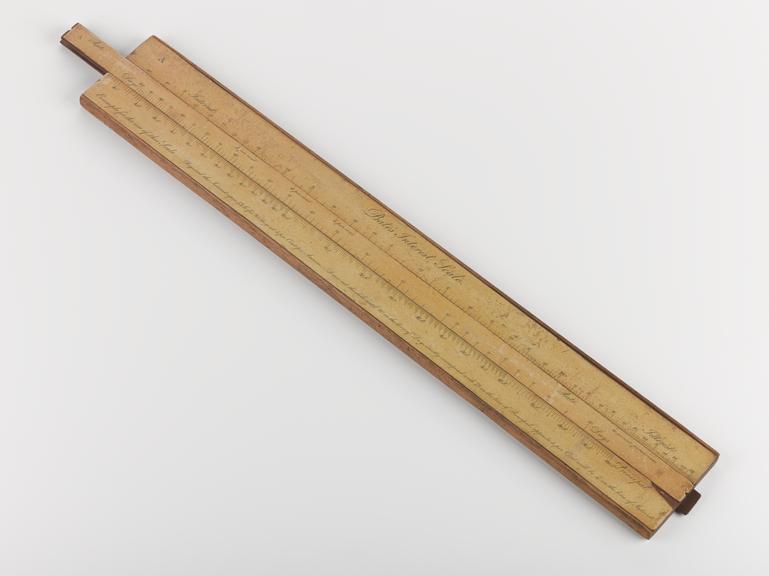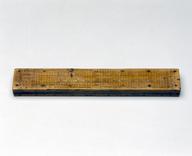









Slide rule, Bate's Interest Scale, published 1st June, 1824 by R.B. Bate, London, 1824; paper scales on wood, two slides, one on each face; size 18 7/8" x 2 7/8" x 3/8"
Paper slide rules became popular in the early 19th century. This example is by Robert Brettell Bate, a well-known maker, and can be used to calculate interest at various rates for various periods for various principals, or lump sums.
Details
- Category:
- Mathematics
- Object Number:
- 1922-89
- Materials:
- wax, box (wood), wood (unidentified) and paper (fibre product)
- Measurements:
-
overal (flat): 15 mm x 535 mm x 75 mm, 0.2 kg
- type:
- ready reckoners
- credit:
- Lt. James F. Godwin




